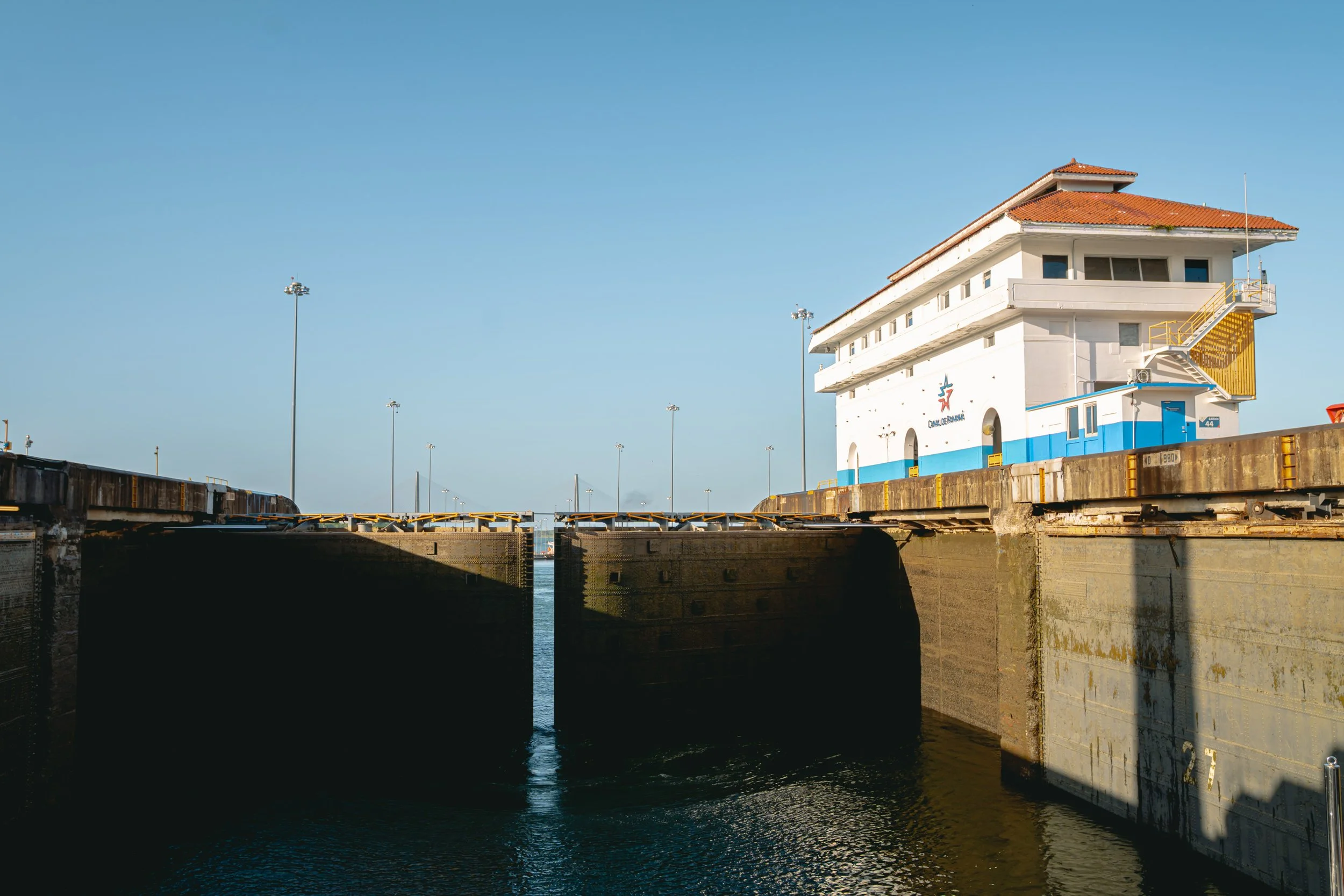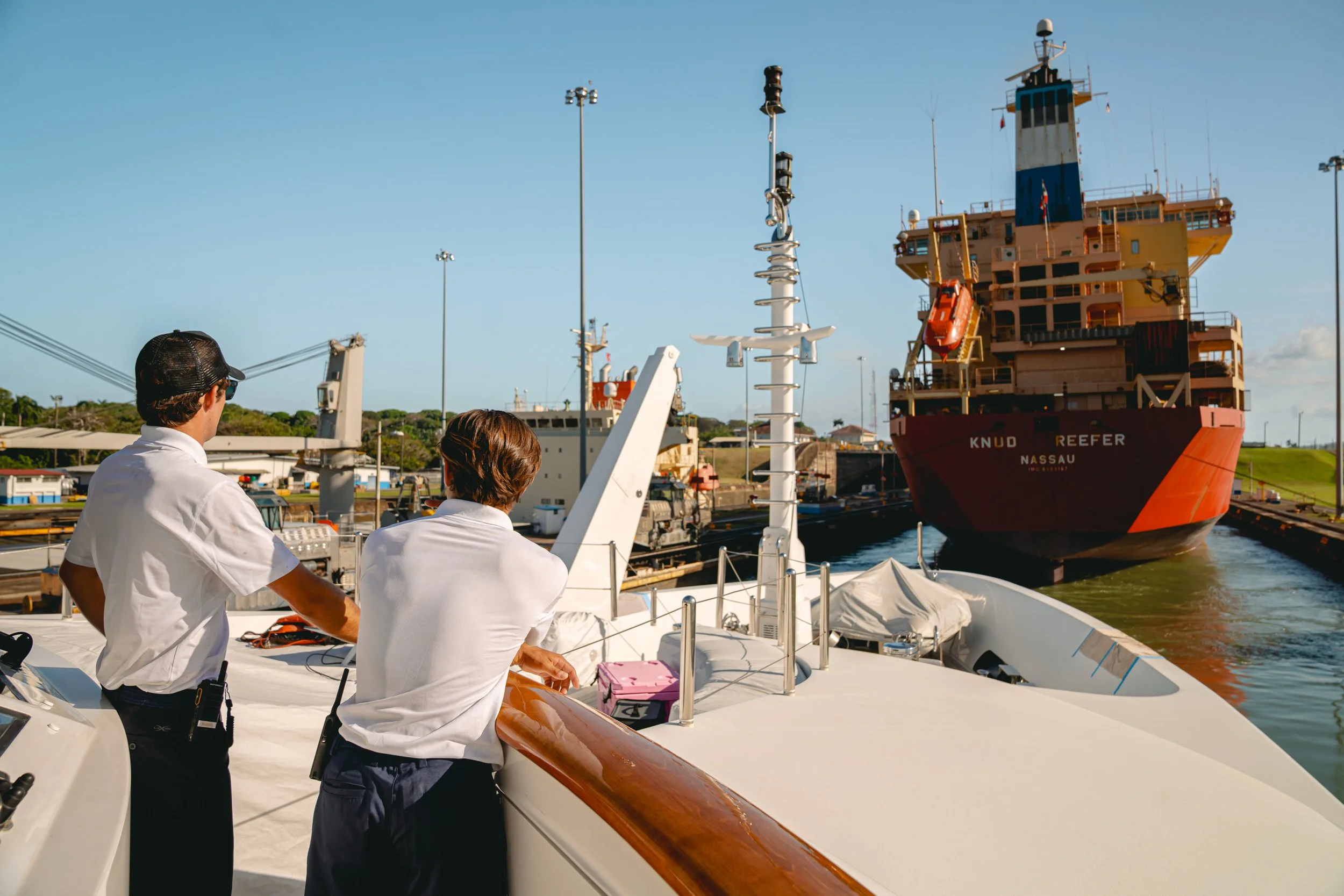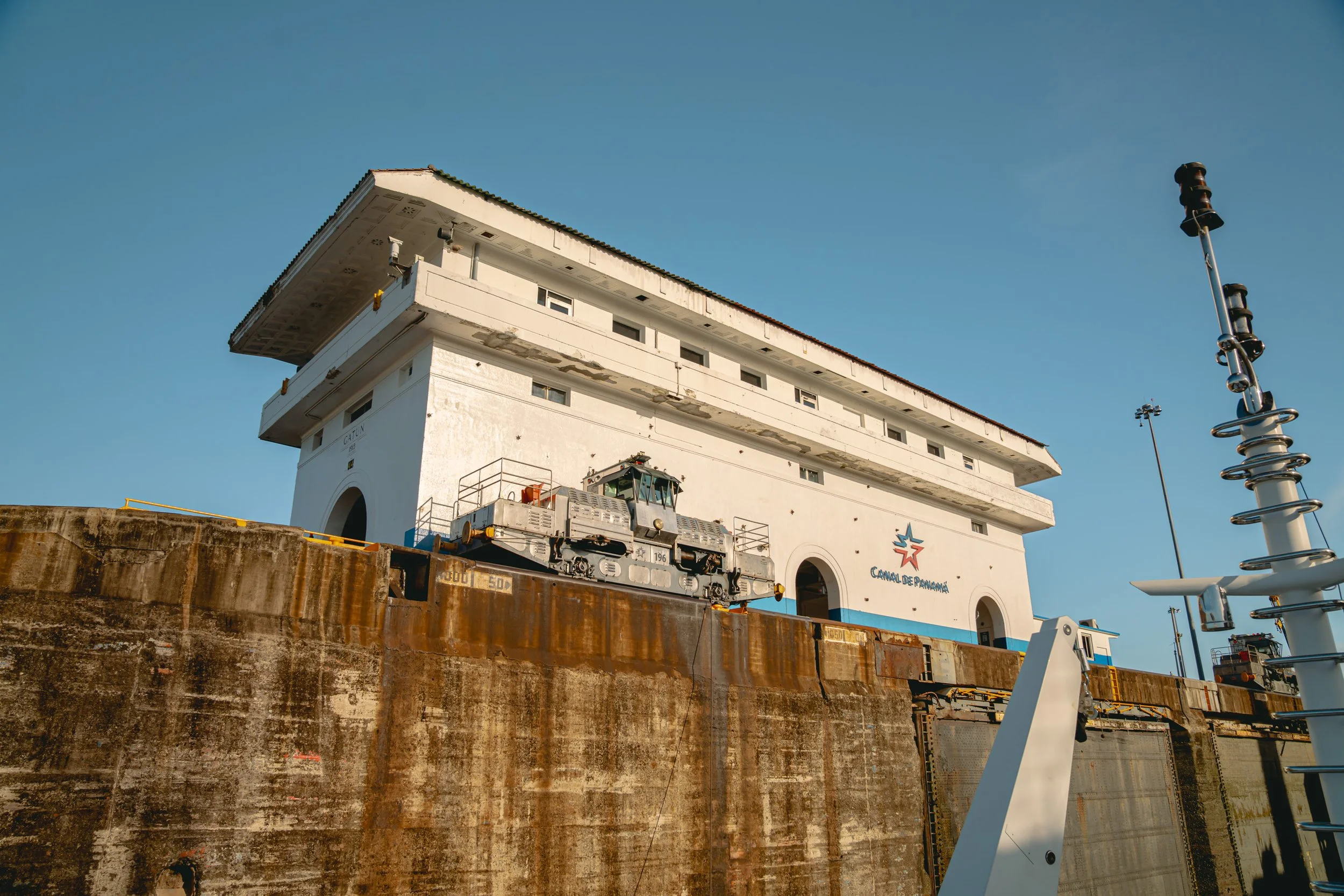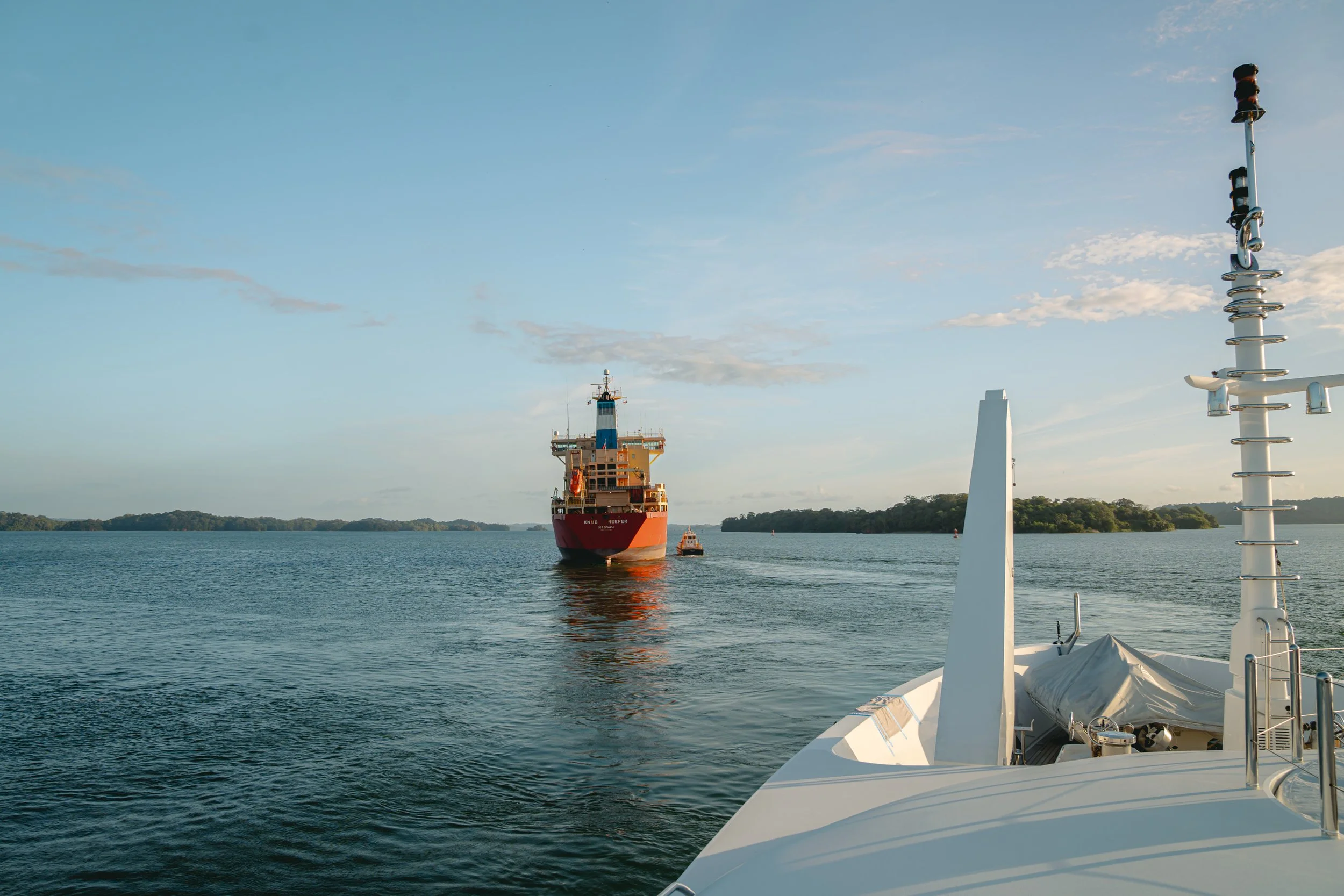Yachting Through the Panama Canal: The Picture-Perfect Atlantic-Pacific Waterway
Welcome to the Panama Canal: the most renowned and lauded man-made maritime shortcut since its completion in 1914.
As one of the most significant oceanic passages in the world, the eponymous canal is a testament to engineering ingenuity that has stood the test of time. This is evident in that over a century later, it’s frequented more than ever before.
This strategic connection between two of the world’s oceans eliminates the need for commercial vessels and circumnavigators alike to have to travel on the treacherous waters of the Cape Horn (this aside from the massive cost-savings it provides through turning an 8,000 nm trip into an approximately 50-mile-long throughway).
For the superyachting industry, yachting through the Panama Canal means more than just an epic transit route: it is a pivotal link in global yacht logistics, allowing vessels to reposition between charter seasons, embark on world cruises, and access paradise on both sides of the Americas.
Navigating this passage isn’t a walk in a Panamanian park, as it comes with a set of distinct challenges, fees, and logistical considerations. Captains, crew, and yacht owners must understand the Canal’s role in yachting and how exactly to prepare for transit.
Luckily for them and anyone else who is interested, we’ll be covering all of that in this article.
All Aboard? To the Panama Canal we go!
Why the Panama Canal is a Priority for Superyachts
The Panama Canal helps superyachts and other sea-bound vessels move between oceans in the most efficient way possible. This saves thousands of nautical miles compared to alternative routes, not to mention all the cost savings on ship supplies, fuel, time, and maintenance.
With the BOOM that the yachting industry continues to enjoy, more yachts have become reliant on this waterway to reposition for charters, deliveries, and private voyages.
On a luxury yacht, time is money — lots of it. By avoiding the lengthy, perilous journey required to sail from ocean to ocean around the southern tip of South America, vessels arrive at their intended charter destination faster, decreasing operational costs and fuel usage.
The canal also connects the prosperous Caribbean charter market with the burgeoning yachting hubs of the Pacific, such as French Polynesia, Australia, and Southeast Asia.
Beyond the transit benefits, Panama has quickly become known as a must-see yachting destination itself. Offering a range of exceptional marinas, refit facilities, and provisioning services, the country has cemented itself as a superyacht-friendly stopover for vessels of all sizes.
Panama also boasts some of the most heart-stopping natural beauty around and this, on top of its vibrant, friendly culture, makes it a picturesque destination for seafarers of all sorts.
A Sailor’s Guide to Yachting through the Panama Canal
This isn’t just a stop-and-go, mom-and-pop operation: transiting the Panama Canal is a meticulous process that requires careful planning.
For the smoothest passage, it is advisable that yacht captains are aware of several key requirements and steps involved in the process.
It begins with registering for transit; this involves submitting documents and paying fees (the larger your vessel, the higher the cost). The canal operates on a booking system and delays can occur, especially during peak season. Once scheduled, a canal pilot will board the yacht to assist with navigation through the locks and channels.
A mechanical marvel, the locks are a series of gates and chambers that raise and lower ships between the Atlantic and Pacific Oceans to 85 feet above sea level, and back down again! This is how vessels reach the man-made Gatún Lake — the body of water that connects the two oceans via Panama.
Line handlers are required for every transit and help secure vessels within the locks using long mooring lines that stabilize the yachts in the rising and falling water levels. Some yachts hire professional line handlers (we recommend doing so), while others train crew members for the job.
The Requirements for a Successful Panama Canal Transit:
Early Registration: Yacht captains must book a slot ahead of time to avoid delays.
Canal Pilot Assistance: A pilot is required on board to navigate the locks and channels.
Line Handlers: At least four trained line handlers must be on board to assist.
Mooring Lines & Fenders: Vessels must have proper mooring equipment to stabilize within the locks.
Tolls & Fees: The cost of transit depends on the yacht’s size and category.
Compliance with Regulations: Captains must ensure the yacht meets all Panamanian maritime regulations.
Challenges and Changes for Yachties in the Panama Canal
Despite the dozens of advantages offered by the canal, transiting is not without its trials.
In recent years, these challenges have become more pronounced as various factors impact yachting through the Panama Canal, affecting transit times and costs.
Water Restrictions: Periodic droughts have led the Panama Canal Authority to implement water conservation measures, leading to decreased numbers of available transit slots per day. In peak season, this can cause severe delays for yachts wanting to transit.
Increased Fees: Rising tolls make it more expensive for superyachts to sail through the canal, with bigger vessels facing hefty costs (large cargo ships can pay as much as an $800,000 toll!).
Longer Wait Times: With the increase in global shipping demand, congestion at the canal has peaked, resulting in prolonged waiting periods. This is why captains must plan crossings well in advance.
Environmental Concerns: Climate change and freshwater conservation efforts could lead to further regulatory changes, potentially affecting future yacht transits.
Stricter Regulations: Yacht captains must stay updated on evolving rules governing transit and compliance requirements to mitigate unexpected penalties or rejections.
Climate change presents real cause for concern as the Panama Canal relies on freshwater from Gatún Lake, meaning decreasing rainfall levels could impact the future of operations. As Panama continues to seek sustainable solutions to maintain canal functionality, further regulatory changes will be imposed on the yachting industry.
Beyond the Canal: Panama as a Yachting Destination
Much more than the world’s number-one maritime shortcut, Panama is a resplendent land, brought to life by the fire and spice of Panamanian culture.
Many yachting through the Panama Canal are en route to other destinations, but the country itself offers world-class cruising opportunities. The San Blas Islands found off the Caribbean coast offer an untouched paradise of white sandy beaches, crystal-clear waters, and coral reefs teeming with exotic life. In this region, you will also meet the indigenous Guna people whose timeless traditions offer an eye-opening cultural experience.
More than a vital component of the canal, Gatún Lake is an underappreciated yachting experience. The massive artificial lake, stretching 38 km (20.5 nm), is corralled by verdant rainforests and a spectacular array of exotic wildlife, including howler monkeys and tropical birds. Yachts can pause on these serene waters and soak in the beauty of the lake, enjoying fishing, kayaking, and simply delighting at the unique experience of floating between two oceans.
The Pacific side is where you’ll find the Pearl Islands which make for another stunning yachting destination, offering secluded anchorages and abundant marine life. Don’t overlook Panama City either; it’s hustling, bustling, and beautifully developed. Enjoy its luxury marinas, including Flamenco Marina and Ocean Reef Marina, providing high-end facilities for superyacht transit and vessels in need of refit or maintenance.
Beyond its natural beauty, Panama is a yachting hub for crew and industry professionals. With top-notch provisioning options, marine services, and a solid reputation as a superyacht-friendly nation, it’s much more than the world’s most popular transit point.
The Future of Yachting through the Panama Canal
With superyacht traffic through the Panama Canal growing all the time, the waterway has had to evolve to meet new challenges and demands. With increasing environmental concerns, infrastructure updates, and shifting industry trends, the canal’s role in global yachting must change and adapt.
Sustainability Initiatives: Efforts to conserve water, including freshwater recycling in the locks, are a priority for the long-term maintenance of operations.
Capacity and Expansion: Discussions to expand transit capacity will help improve efficiency and reduce wait times for yachts.
Staple Route: More captains and yacht management companies are incorporating Panama into their long-term cruising plans, especially for Pacific-bound voyages.
Changes Are Coming: Climate shifts and stricter regulations may impact transit procedures which means yacht owners must stay abreast of environmental and regulatory proceedings.
While the Panama Canal is an essential passage for superyachts, its future will be determined by sustainability efforts, infrastructural developments, and the changing needs of the yachting community.
Keeping an eye on these changes is key for owners and captains planning their next crossing.
A Quick History: How the Panama Canal Came to Be
Panama is a colorful country located on the isthmus linking Central and South America (an isthmus is a narrow strip of land surrounded by sea on either side and forming a link between two larger areas of land) with abundant cultural offerings and natural beauty.
But what really placed Panama on the world map?
Undoubtedly, the 82 km of partly artificial waterways connecting the Pacific to the Atlantic Ocean across one of the narrowest points of the American continent, known as the Panama Canal. It is considered among the most remarkable engineering feats in human history, made possible by American innovation at the turn of the 20th century.
In 1880, the French tried to be the first to create the canal per the de Lesseps campaign — the same engineer behind the Suez Canal — but were unsuccessful due to a lack of mechanical power (A.K.A. 19th-century technology), poor planning, and financial problems. Ultimately, it was tropical disease that sent them packing back to Paris though, with more than 22,000 French workers succumbing to construction accidents, yellow fever, and malaria during the 9 years of attempted construction.
The United States stepped in and took over the reins of the project in 1904, equipped with new-and-improved construction techniques and, most beneficially, disease control measures for those deadly malaria-carrying mosquitos. Spanning a decade, a 75,000-man-strong workforce triumphed over extreme jungle conditions, torrential rains, and the mountainous challenge of creating a passage through the Gaillard Cut – a deep trench carved through the continental divide.
In 1914, the canal opened with its first official transit being the SS ANCON, marking the start of a new era in global commerce. Political tensions arose between the U.S.A. and Panama due to U.S. control of the canal for much of the 20th century but were resolved in 1977. This was when President Jimmy Carter signed the Torrijos-Carter Treaties, transferring full control of the canal to Panama by December 31, 1999.
Today, the Panama Canal is a primary hub for international trade, handling almost 15,000 ships per year and greatly contributing to the Panamanian economy. In 2010, the 1 millionth ship crossed through the canal’s hallowed locks, 96 years after it was opened.
Over time, the canal has come to symbolize much more than just a magic maritime wormhole: it is an ode to human perseverance, ingenuity, and global unity.
A Global Asset: Connecting Much More Than Oceans
The Panama Canal’s profound impact on maritime travel and the economy of Panama make it a lifeline for many more players than the superyacht industry alone.
A vital link between the Atlantic and the Pacific, even with its many challenges, the benefits of this transit route far outweigh the drawbacks. Providing yacht owners and captains understand the intricacies of the process and plan ahead, Panama offers growing appeal as a top yachting destination, too.
Whatever happens within the yachting industry, the Panama Canal will remain an essential gateway between two oceans and a monolithic tribute to the engineering might of humankind.
Tick the Panama Canal Off
Your Bucket List:
Get In Touch with YachtieWorld to lock in
your ocean-to-ocean Panamanian paradise cruise today!








